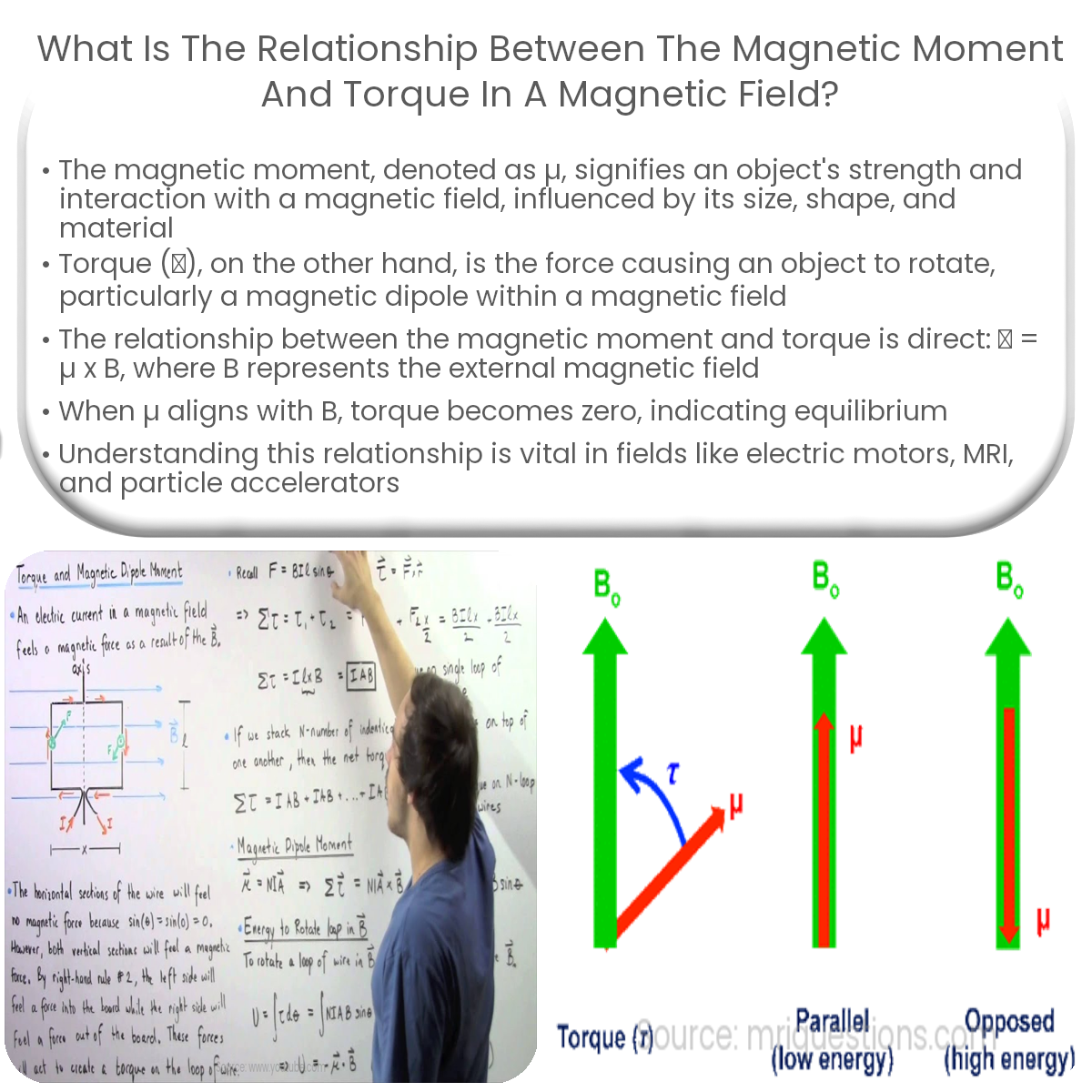The torque acting on a magnetic dipole in a magnetic field is directly proportional to the magnetic moment and the magnetic field strength.
Understanding the Relationship Between Magnetic Moment and Torque in a Magnetic Field
A magnetic moment refers to a measure of an object’s magnetism strength and orientation, while torque is the force that causes an object to rotate around an axis. To understand the relationship between the magnetic moment and torque in a magnetic field, it is essential to delve into the fundamental principles of magnetism and torque.
Magnetic Moment
The magnetic moment, often denoted as µ, is a vector quantity that represents an object’s ability to align itself with an external magnetic field. In simple terms, it is a measure of how strongly the object interacts with the magnetic field. The magnetic moment depends on the size, shape, and material of the object.
Torque in a Magnetic Field
Torque, represented by the symbol τ, is the force that causes an object to rotate around an axis. In the context of a magnetic field, torque is the force that acts on a magnetic dipole, causing it to align with the external magnetic field. The torque exerted on an object in a magnetic field depends on the magnetic moment of the object and the strength of the external magnetic field.
The Relationship Between Magnetic Moment and Torque
When a magnetic dipole is placed in a magnetic field, it experiences a torque, trying to align itself with the direction of the magnetic field. This torque is directly proportional to the magnetic moment of the dipole and the strength of the magnetic field. Mathematically, the relationship between torque (τ), magnetic moment (µ), and the magnetic field (B) is expressed as:
τ = µ x B
Here, τ is the torque acting on the dipole, µ is the magnetic moment of the dipole, and B is the external magnetic field. The cross product (x) indicates that the torque is perpendicular to both the magnetic moment and the magnetic field.
When the magnetic moment is parallel to the magnetic field, the torque becomes zero, meaning that the dipole is in equilibrium. This is because the magnetic moment is already aligned with the magnetic field, and no force is acting to change its orientation.
Conclusion
In summary, the relationship between the magnetic moment and torque in a magnetic field can be described as a direct proportionality. The torque acting on a magnetic dipole in a magnetic field is determined by the magnetic moment of the dipole and the strength of the magnetic field. Understanding this relationship is crucial in various applications, such as electric motors, magnetic resonance imaging (MRI), and particle accelerators.


